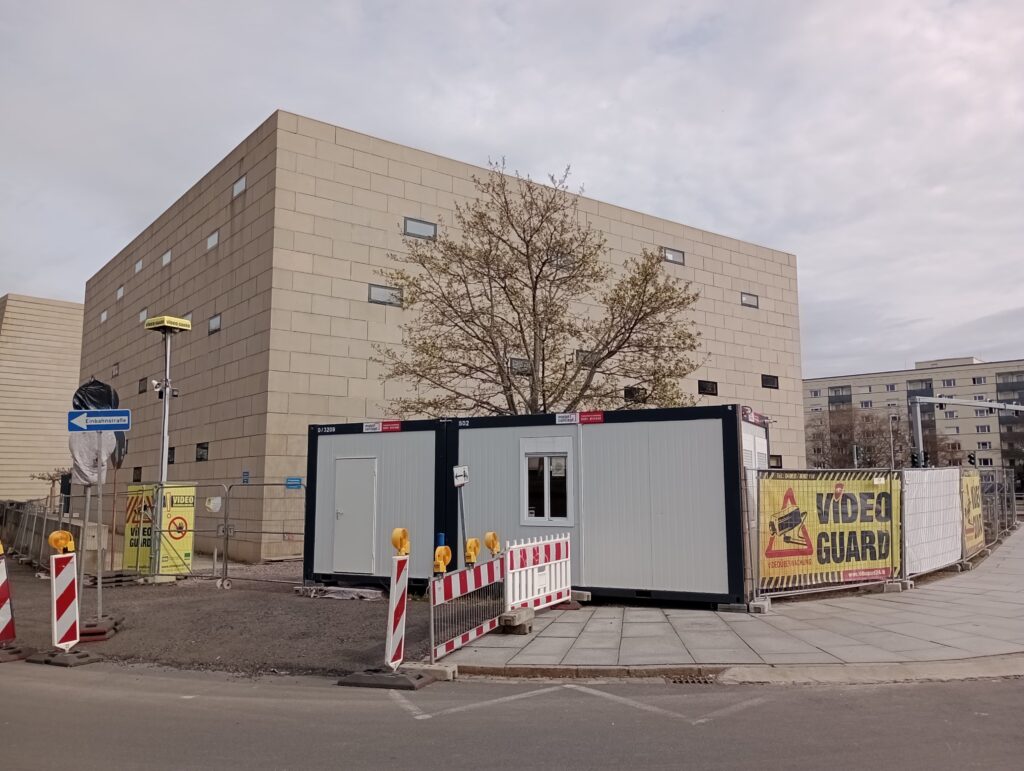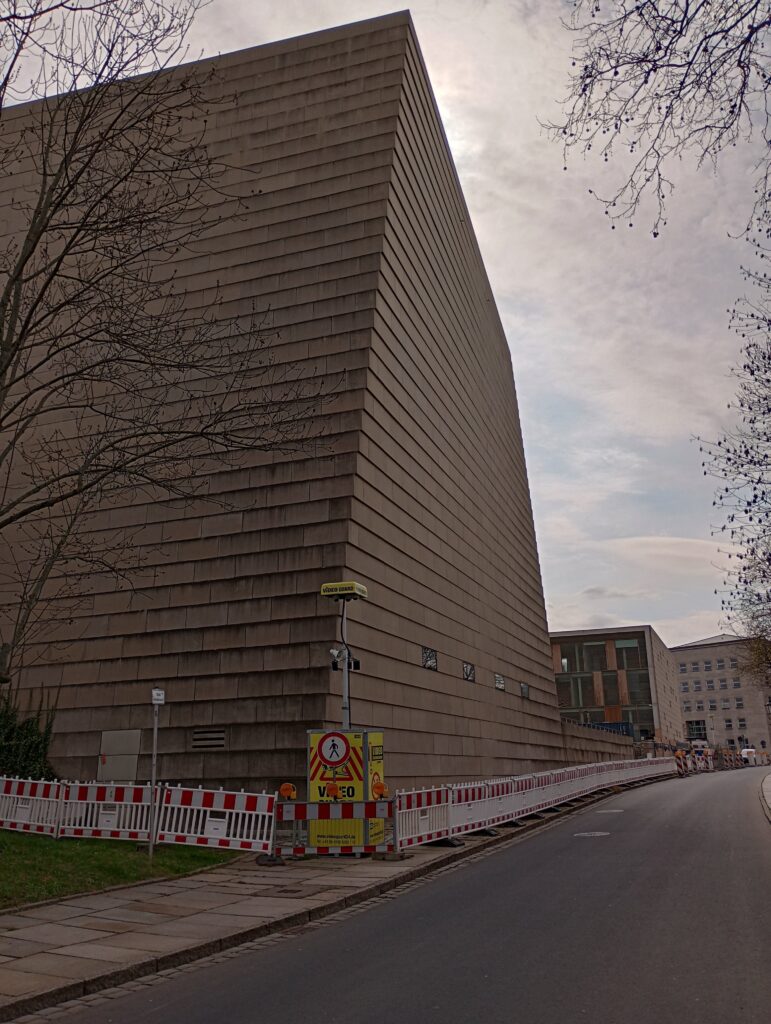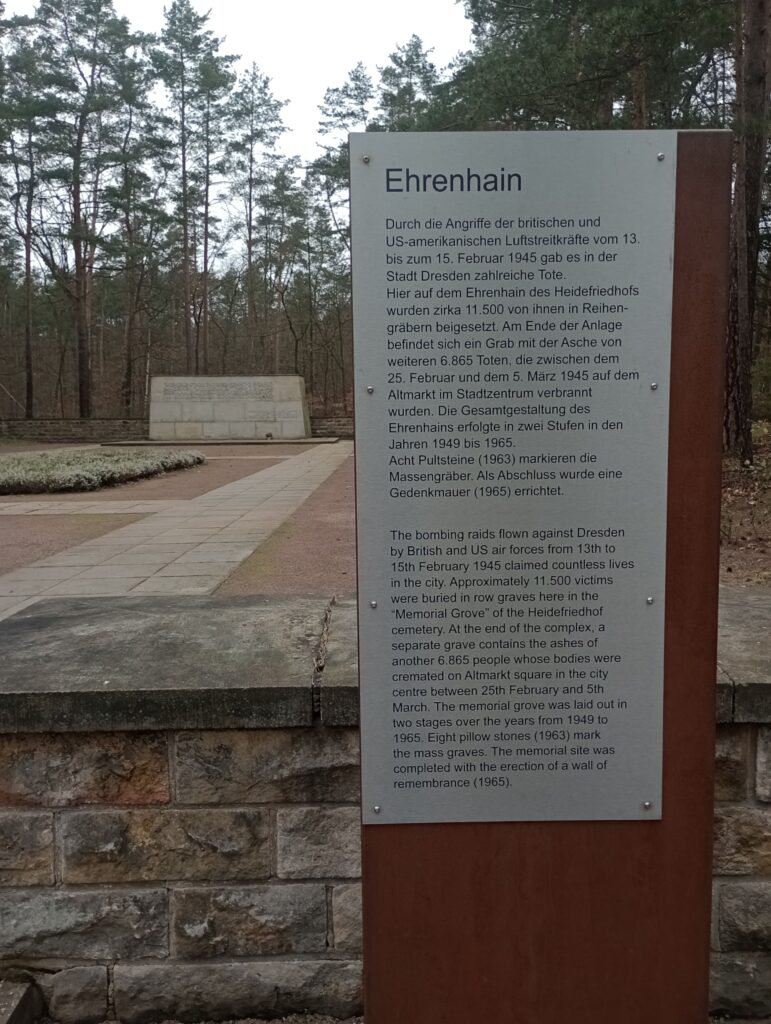Friday 22nd March 2024
From the hotel it is a short walk to the centre of Dresden, which was almost completely destroyed by the RAF and American bombing from 13th to 15th February 1945. I pass the Altmarkt where thousands of people were cremated following the raid, and through to the Neumarkt, dominated by the rebuilt Frauenkirche. Completely destroyed by the bombing and resulting firestorm it remained as rubble until a new foundation stone was laid in 1994, with final completion in 2005.


From the church, a ten minute stroll to the banks of the river Elbe, then Brühlschen Garten, and onto the new Jewish Synagogue. On Kristallnacht, 9-10 November 1938, at this location, the Semper Synagogue was destroyed. The new synagogue has, in its walls, remants of the original. The video shows a sweep from the Synagogue to the Elbe and then the Frauenkirche.
Then a return to the Neumarkt via the banks of the Elbe, and back to the hotel. I realise a specific contrast in what I had just seen. The new synagogue is surrounded by fencing and security cameras, overseen by two polizei sitting in their car.


Outside the Frauenkirche tour guides lead their customers, tourists drink over-priced coffee, a clown teases passers by, an artist paints and sells his water colours, and a male and female singer perform arias to an appreciative crowd.
To the north of the city is the Heidefriedhof, where the bodies and ashes of those killed by the bombing are interred. Set amidst the pines is a walkway to a circular area bounded by stone plinths, each bearing place names. Coventry, Dresden, Leningrad, Lidice, Oradour, Rotterdam, Warsaw, Thierenstadt, Sachsenhausen, Ravensbrück, Dachau, Buchenwald, Bergen-Belsen, Auschwitz.
Then a walk through the ‘Memorial Grove’, where approximately 11,500 people killed by the bombing are buried – marked by eight pillow stones – to a grave with the ashes of the 6,865 people cremated in the Altmarkt. At the end is a curved memorial wall.



In the debate I mentioned yesterday about the Second World War bombing, between Christopher Hitchens and AC Grayling (https://www.youtube.com/watch?v=hh7swg7RyqA&t=3767s), Hitchens refers to the German Jew Victor Klemperer, who kept a detailed diary describing the rise of, and life under, Nazism, and who, prior to the Allied raids, was about to be deported from Dresden, inevitably to his death. As Hitchen’s says, following the raids, ‘there’s no authority in Dresden anymore, and there’s no one to take him to the train with his wife, and they peel off their yellow stars … and they set off for their home … it’s over, it’s completely over. There’s no one to give orders and there’s no one who will take them anymore.’
Next – Stalag Luft III, Poland.
